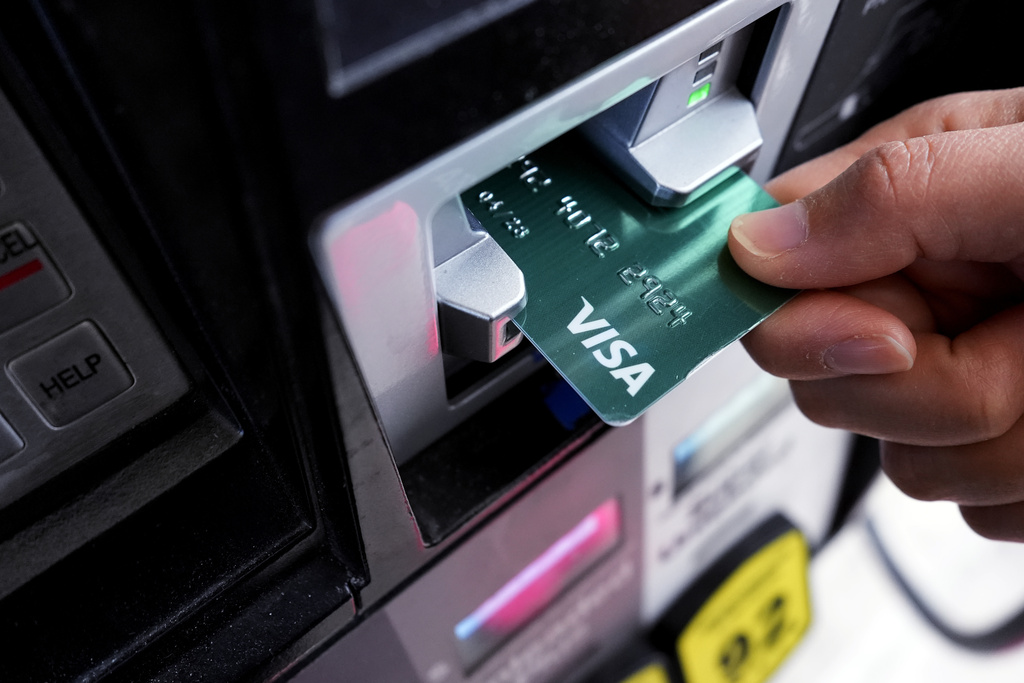Federal Reserve Cuts Interest Rates: What It Means for Your Loans \ Newslooks \ Washington DC \ Mary Sidiqi \ Evening Edition \ The Federal Reserve has cut its benchmark interest rate by half a percentage point, reducing it to between 4.75% and 5%, marking the first cut in four years. This move is intended to support the job market and manage inflation, which has shown signs of slowing. Consumers can expect changes in borrowing costs, including lower interest rates on auto loans, mortgages, and credit cards, though the full impact may take time.

Federal Reserve Cuts Interest Rates: Quick Looks
- Fed Rate Cut: The Federal Reserve lowered its benchmark interest rate by half a percentage point, the first reduction in over four years, to stimulate the economy and manage inflation.
- Job Market Focus: The Fed aims to support the labor market by reducing borrowing costs, helping keep unemployment low as job growth slows.
- Impact on Loans: Lower interest rates will eventually reduce costs for borrowers with credit card debt, auto loans, and mortgages, though some sectors, like auto loans, may see slower relief.
- Savings Accounts: Savers may see declining yields on high-yield savings accounts and CDs, but it’s still possible to lock in favorable rates.
- Future Cuts: More rate cuts are expected in the coming months, depending on inflation and job growth trends.
Deep Look:
The Federal Reserve announced a half-percentage point cut to its benchmark interest rate on Wednesday, reducing it to a range between 4.75% and 5%. This marks the first interest rate reduction in over four years, signaling that the central bank believes inflation is under control enough to begin easing borrowing costs. At the same time, the Fed is also concerned about job market health, prompting it to lower rates to support hiring and prevent a rise in unemployment.
The decision comes after the Fed imposed 11 rate hikes starting in March 2022, in an effort to curb inflation. Now that inflation is showing signs of stabilizing, the Fed feels confident in scaling back its aggressive rate increases.
Fed Chair Jerome Powell explained that the rate cut reflects the need to adjust monetary policy to the current economic environment, saying, “We know that it is time to recalibrate our (interest rate) policy to something that’s more appropriate given the progress on inflation.” He also emphasized that the job market remains solid and that lowering rates would help keep it that way.
Impact on Savings
With the Fed lowering its key rate, savers may notice declining yields on high-yield savings accounts, certificates of deposit (CDs), and other savings instruments. While yields have been attractive during the period of high rates, they are expected to decrease as rates fall.
Christine Benz, director of personal finance at Morningstar, advises savers to avoid holding too much in cash as yields on short-term instruments will likely decline. Jacob Channel, a senior economist at LendingTree, also encourages consumers to avoid making hasty financial moves based solely on a single Fed rate cut. Savers can still lock in decent yields on longer-term CDs, but should act cautiously and avoid overhauling their financial strategies based on short-term rate changes.
Borrowing and Credit Card Debt
Borrowers carrying credit card debt and other types of loans may see some relief as interest rates begin to drop. Currently, credit card interest rates are at historic highs, with averages of 23.18% for new offers and 21.51% for existing accounts, according to WalletHub.
Matt Schulz, a credit analyst at LendingTree, notes that while the Fed’s rate cut is a step in the right direction, it may not immediately result in significant changes for borrowers. He suggests that consolidating debt through balance transfer cards or low-interest personal loans may offer more immediate relief.
Mortgage Rates
Although the Fed’s benchmark rate does not directly set mortgage rates, it influences them indirectly. Mortgage rates tend to move in the same direction as the Fed’s rates, and ahead of this cut, mortgage rates had already begun to decline.
Currently, the average mortgage rate is around 6.46%, and with more rate cuts expected, borrowers could see rates fall further. Jacob Channel from LendingTree explains that most Americans hold mortgages at around 5%, so rates may need to drop more before refinancing becomes appealing to many homeowners.
Auto Loans
For consumers looking to purchase a vehicle, the rate cuts are a welcome change, but they may not result in immediate savings. Greg McBride, an analyst at Bankrate, stresses the importance of shopping around for the best rates rather than accepting the first offer at a dealership.
Auto loan rates are currently high, averaging 7.1% for new vehicles and 11.3% for used cars, according to Edmunds.com. Robert Frick, corporate economist for Navy Federal Credit Union, predicts that rates for auto loans will fall, but the process may be slow, especially for borrowers with lower credit scores, who are still likely to face double-digit interest rates for the remainder of the year.
Inflation and the Job Market
The Fed’s rate cut comes at a time when both inflation and the job market show signs of moderation. In August, consumer prices rose by 2.5%, a decline from the previous month and the smallest increase since February 2021. At the same time, hiring picked up, with 142,000 new jobs added in August, bringing the unemployment rate down slightly to 4.2%.
These indicators suggest that while the economy is cooling, it remains stable enough for the Fed to continue adjusting its policies. The pace of future rate cuts will depend largely on how inflation and job growth evolve in the coming months. If inflation continues to slow and the job market holds steady, more rate cuts may be on the horizon.
Jerome Powell emphasized that the Fed remains committed to balancing economic growth with price stability, stating, “We don’t think we’re behind — we think this is timely,” as the Fed looks to support the job market without allowing inflation to rebound.
Conclusion
As the Federal Reserve begins cutting interest rates, consumers and businesses alike will see changes in the costs of borrowing and savings. While savers may face declining yields, borrowers could benefit from lower rates on credit cards, mortgages, and auto loans. However, the pace at which these changes take effect will vary, with some markets, like auto loans, likely seeing slower improvements.
Looking ahead, the Fed’s decisions will continue to depend on the inflation rate and job market performance, making it crucial for consumers to stay informed about future rate cuts and how they may impact personal finances.







